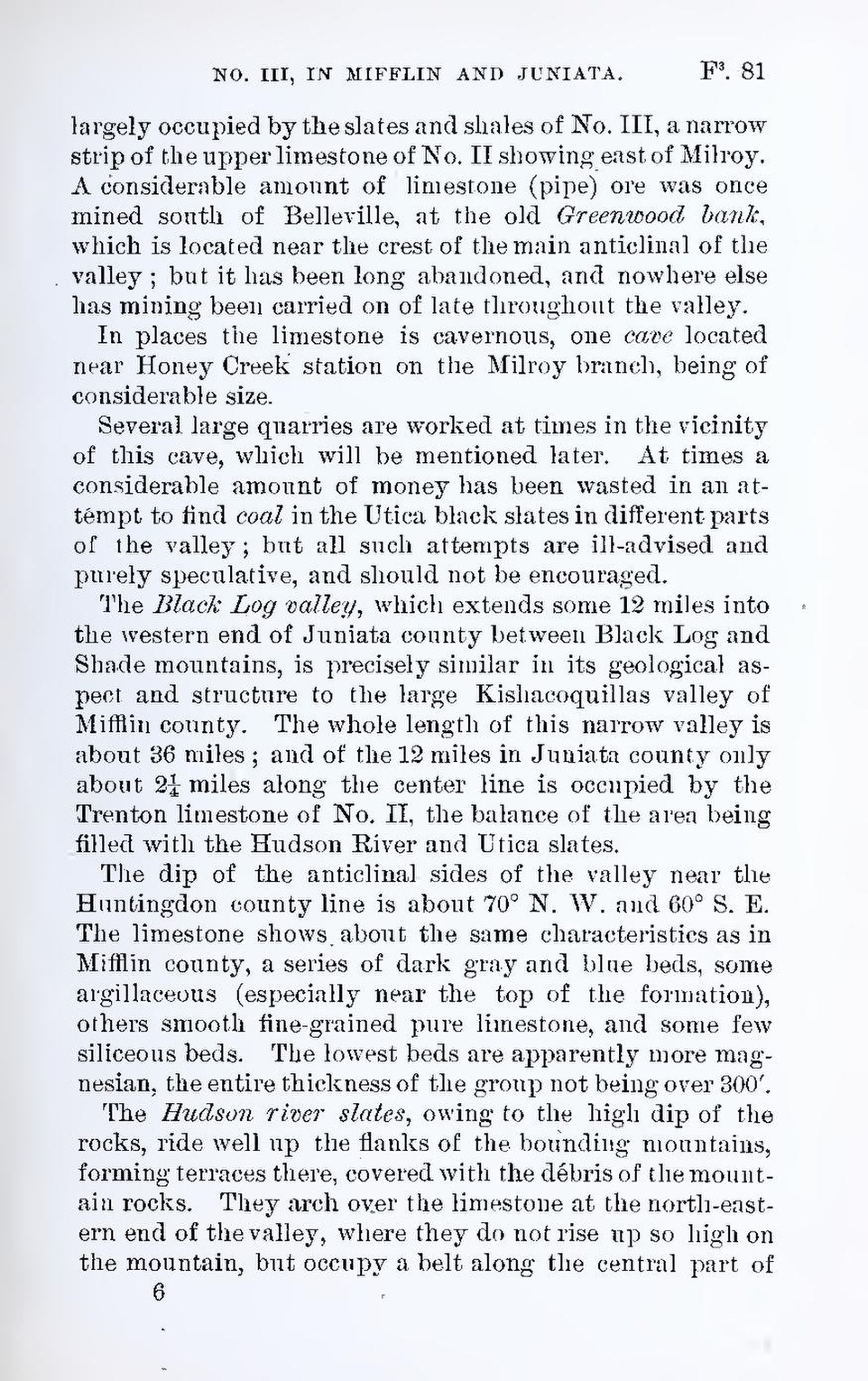largely occupied by the slates and shales of No. III, a narrow strip of the upper limestone of No. II showing east of Milroy. A considerable amount of limestone (pipe) ore was once mined south of Belleville, at the old Greenwood bank, which is located near the crest of the main anticlinal of the valley; but it has been long abandoned, and nowhere else has mining been carried on of late throughout the valley.
In places the limestone is cavernous, one cave located near Honey Creek station on the Milroy branch, being of considerable size.
Several large quarries are worked at times in the vicinity of this cave, which will be mentioned later. At times a considerable amount of money has been wasted in an attempt to find coal in the Utica black slates in different parts of the valley; but all such attempts are ill-advised and purely speculative, and should not be encouraged.
The Black Log valley, which extends some 12 miles into the western end of Juniata county between Black Log and Shade mountains, is precisely similar in its geological aspect and structure to the large Kishacoquillas valley of Mifflin county. The whole length of this narrow valley is about 36 miles; and of the 12 miles in Juniata county only about 2¼ miles along the center line is occupied by the Trenton limestone of No. II, the balance of the area being filled with the Hudson River and Utica slates.
The dip of the anticlinal sides of the valley near the Huntingdon county line is about 70° N. W. and 60° S. E. The limestone shows about the same characteristics as in Mifflin county, a series of dark gray and blue beds, some argillaceous (especially near the top of the formation), others smooth fine-grained pure limestone, and some few siliceous beds. The lowest beds are apparently more magnesian, the entire thickness of the group not being over 300′.
The Hudson river slates, owing to the high dip of the rocks, ride well up the flanks of the bounding mountains, forming terraces there, covered with the débris of the mountain rocks. They arch over the limestone at the north-eastern end of the valley, where they do not rise up so high on the mountain, but occupy a belt along the central part of
